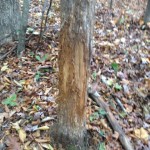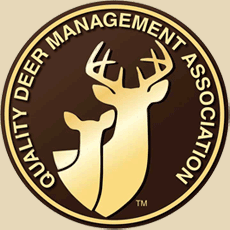When it comes to locating sign for big bucks nothing stands out like big rubs. This sign is easily identified, easily found and for some of the most successful hunters the number one sign they look for.
“Rubs” also known as tree rubs, are used for many purposes. Some are used to remove the velvet from the antlers at the end of the growing season. Although most bucks use bushes and brush for this since the antlers are still a bit tender. Other rubs are used as scent markings or territory markings, and some are community rubs. Knowing which are which, and how to identify these can lead to continued success for trophy hunters in the Carolina’s and Georgia.
As the rut begins to take shape, dutiful hunters will notice more and more rubs present near the core areas of trophy bucks. As these become more prominent, and more frequent it identifies the presence of a buck in a certain area. Trophy bucks will, as I like to call it, ‘announce’ their presence, and they do this with rubs on big trees, and trees that are easily noticed by rival bucks. They will also increase the frequency of their rubs and the location is critical.
In one recent location, I noticed a line of rubs on a property I was hunting. As I followed the line, there were twenty three rubs within a one hundred yard stretch. Further investigation showed no less than forty eight rubs within this five acre area. Clearly this was this particular bucks core area and he was letting all rival bucks know this via this visual and scent markings left by these series of rubs.
Hunters should take note – these rub lines are one of the most important pieces of information left by bucks. When a hunter notices these rub lines, again these are a series of rubs on trees in a fairly straight line that can cover anywhere from a few dozen yards to several hundred yards. The greater the frequency the more he is visiting his area. And the closer to these rubs you should set your stand. One thing is for sure, unlike scrapes that are very unpredictable, rubs will let the hunter know for certain that a buck is there and visiting regularly.
While its true that you cannot definitely the size of the buck from the size of the rub, there are key indicators that will point the hunter in certain directions. While a trophy buck will rub a small tree, a small buck will not rub a big tree. Conversely, a four point cannot leave the sign that a big eight point buck leaves. Rubs on iron wood trees that are nine inches in diameter will definitely indicate a trophy buck. While a one inch sapling can be either. If I find a series of rubs on trees in excess of four inches in diameter, I hang a stand close by knowing that he has announced his presence and I need to hunt this area.
Experience scouting the same areas will also show hunters that some bucks seem to prefer certain types of trees to rub. In the midlands of South Carolina, bigger bucks seem to prefer larger cedars and hard wood trees, while subordinate bucks will tend to rub pine trees.
These rub lines can also tell you which direction the bucks are traveling along their route. Big rubs tend to be on only one side of the tree, this will indicate the direction of travel. When I notice this, I take note of the wind, and hang a stand that will put the wind in my favor along his direction of travel. For example, If I notice that the direction of travel is north to south, I will hang a stand along his travel route on the south side of his travel route and only hunt with a northerly wind. This will significantly place the odds in my favor. If the conditions are favorable, and I can hunt there for three consecutive days, more times than not I will see this buck.
When scouting for bucks nothing excites me more than finding big rubs that follow a certain path. Moreover, if I notice a tree that has scars on it, and sign that it has been rubbed for consecutive years, I know I am dealing with an older buck that will take extra care. However, he has shown me his core area, all needed now is to set up and kill him.
Of all the sign left by trophy bucks nothing will put more trophy bucks in your sights like rub lines. Food plots are nice, scraps are unpredictable, and travel corridors are sketchy. But add some of these with big rubs along a series of trees over a stretch of ground and you have the final piece of the puzzle that will put big antlers in your hands.







